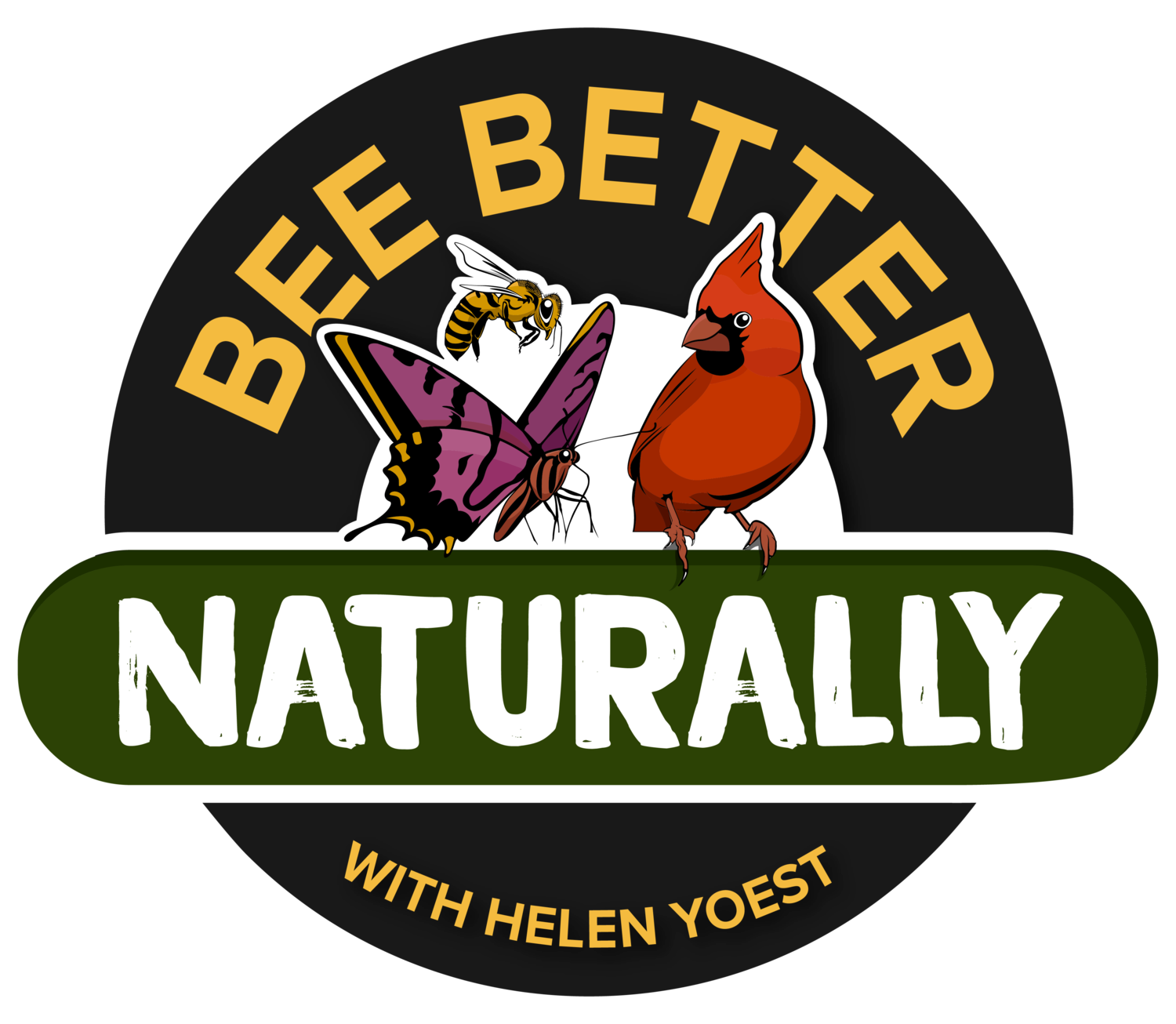The holiday season can make us all a little stir crazy. Okay, make that a lot crazy. Instead, just chill. Try making these birdseed wreath recipes; a bird at a wreath is like two gifts off your list.
In the kitchen of Helen’s Haven, the demonstration garden for the non-profit Bee Better Naturally, Building Better Backyards for Birds, Bees, and Butterflies, I look to nature in making my gifts. With a Bundt pan, birdseed, and a few items from the pantry, I am able to whip up a delightful gift for the birds and the bird lovers on my list.
Because of our unpredictable weather, 40s in October or 60s in February, I played around with two types of birdseed wreaths—one with an edible glue using gelatin and the other with lard or suet. You can make and use the gelatin version anytime, but when it’s really cold, and when the birds benefit from the fat most, make the recipe with suet or lard. As such, here are two recipes to use depending on the time of year.
Oh, and if you donated your Bundt pan to Goodwill, you can find them at Harris Teeter for ten dollars. To complete the gift, bundle up these recipes with the pan and the wreath so your friends and family will be able to make their own wreath.
Ingredients
Edible Glue-Based Wreath
You can make and use the gelatin version anytime.
Materials needed:
• 1 package unflavored gelatin
• 1/2 cup warm water
• 3 tablespoons light corn syrup
• 3/4 cup all-purpose flour
• 4 cups bird seed
• Bundt pan
• Nonstick cooking spray
Step 1: Mix Up Edible Glue
Stir the gelatin into the warm water until dissolved. Whisk in corn syrup and flour. This will become a gooey paste.
Step 2: Stir in Birdseed
In a large bowl, mix seeds (I used a Pennington Birder’s Blend) and dried cranberries to fill four cups of mix. Using a spatula to stir, fold in until all of the seeds and fruit are coated with the edible glue. Make sure the seed is well mixed with the edible glue to keep the wreath from falling apart.
Step 3: Mold Wreath
Spray the Bundt pan with nonstick cooking spray. Using the spatula, press the seed mixture into the pan. Press firmly until the mixture is well packed and even. Set the pan aside overnight. The mixture will harden and turn white, and the surface will be firm and dry when ready. Test readiness by gently pressing on the surface. It should be hard. If not, allow more time to set.
Lard / Suet-Based Wreath
The lard/suet fat version does better when the temperatures outside are at 32 degrees or near freezing.
Materials needed:
• 1 pound real lard or suet. Do not use Crisco or other such products. Lard is rendered suet; for our purposes, these are interchangeable.
• 4 cups wild birdseed
• 1 cup dried cranberries
• Bundt pan
• Nonstick cooking spray
Step 1: Melt Lard or Suet
In a saucepan, melt the lard or suet on a low heat.
Step 2: Stir in Birdseed
In a large bowl, mix seeds (I used a Pennington Birder’s Blend) and dried cranberries to fill four cups of mix. Using a spatula to stir, fold-in the lard or suet until all of the seeds are coated. Make sure the seed is well mixed with the lard/suet to keep the wreath from falling apart.
Step 3: Mold Wreath
Spray the Bundt pan with nonstick cooking spray. Using the spatula, press the seed mixture into the pan. Press firmly until the mixture is well packed and even. Set the pan in the refrigerator overnight.
Add Finishing Touches to the Wreath
Once the wreath is hard, gently remove it from the mold by turning it upside down onto a plate. Tie a wide ribbon (one to two inches) for hanging outside for the birds to enjoy. I had made these sample wreaths before fresh cranberries were available in the grocery store. To add a more decorative touch, place three fresh cranberries in every other channel of the Bundt pan after spraying with a nonstick cooking spray and before adding the coated seed mixture.
—
Helen Yoest is the Executive Director of Bee Better, an area non-profit 501(C)(3) designing and educating area homeowners about building better backyards for birds, bees, and butterflies.


